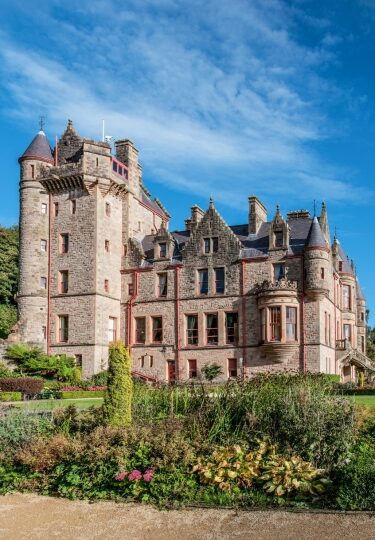Defining what Ireland is known for is a difficult task, as it’s a long list to refine. From its famous music, and dance, through its racehorses and Guinness, to cities such as Dublin, Belfast and Cork, it’s a small country with a big presence.
The island of Ireland even boasts two countries: Northern Ireland and the Republic of Ireland–officially just called “Ireland”. Northern Ireland is part of the United Kingdom, while Ireland is an independent country, part of the European Union.
But those two countries share as many similarities as they do differences. They have a joint history going back thousands of years, and beautiful landscapes rich in Ireland’s famous “hundred shades of green”.
Here are some of the things Ireland is known for.
Natural Beauty
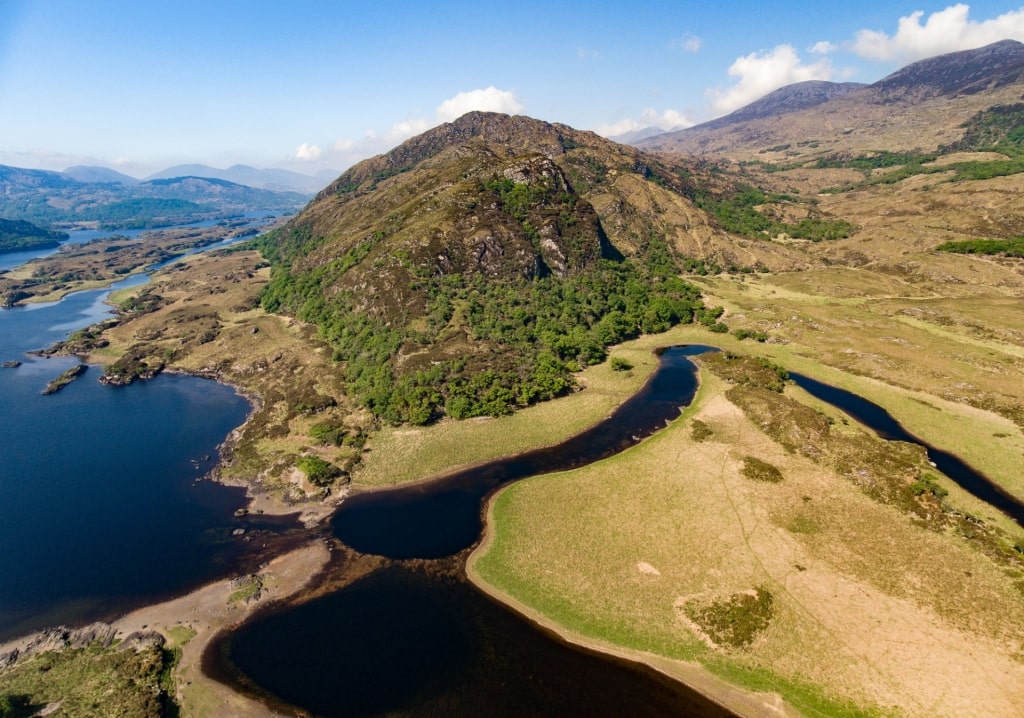
Killarney National Park
The European lakes and mountains of Ireland feature prominently in its advertising for good reason. The vivid greens of the landscape, illuminated by shafts of sunlight from moody skies, really have to be seen to be believed.
Killarney National Park is among the country’s most famous scenic areas. Visitors come from all over the world, not to mention the rest of Ireland, to see these lakes, valleys, and peaks in County Kerry.
From Waterford, you can follow the 25-mile Waterford Greenway along a former railroad line to Dungarvan. Cycle across bridges, viaducts and through a tunnel while taking in spectacular views of the Irish countryside.
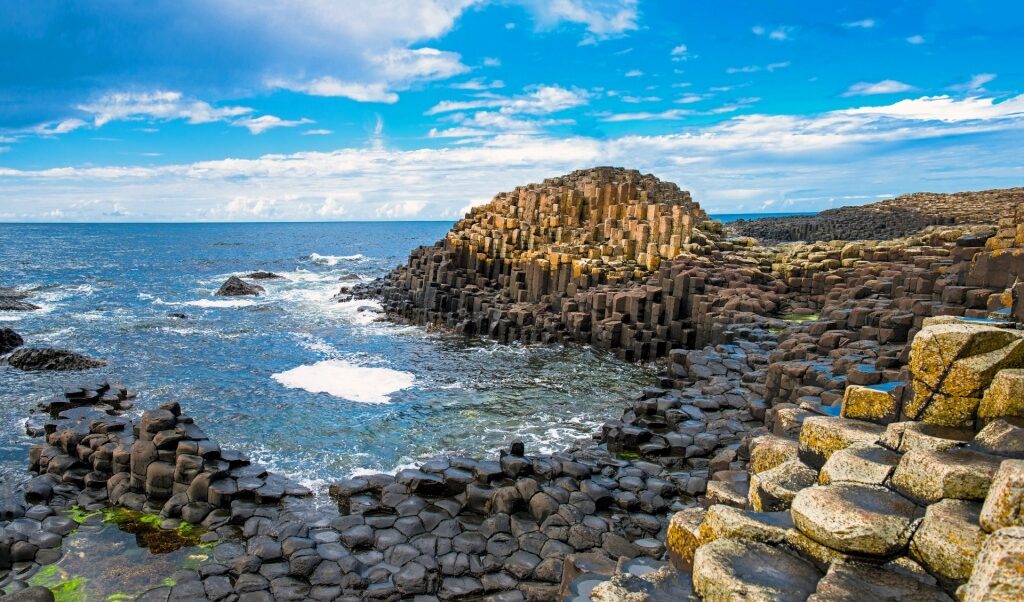
Giant’s Causeway, Northern Ireland
In Northern Ireland, the Causeway Coast regularly makes lists of the world’s most scenic drives. It is anchored by the Giant’s Causeway, a picturesque outcropping of volcanic rock in extraordinary forms.
If you’re traveling with family, visiting here is one of the best things to do in Ireland with kids.
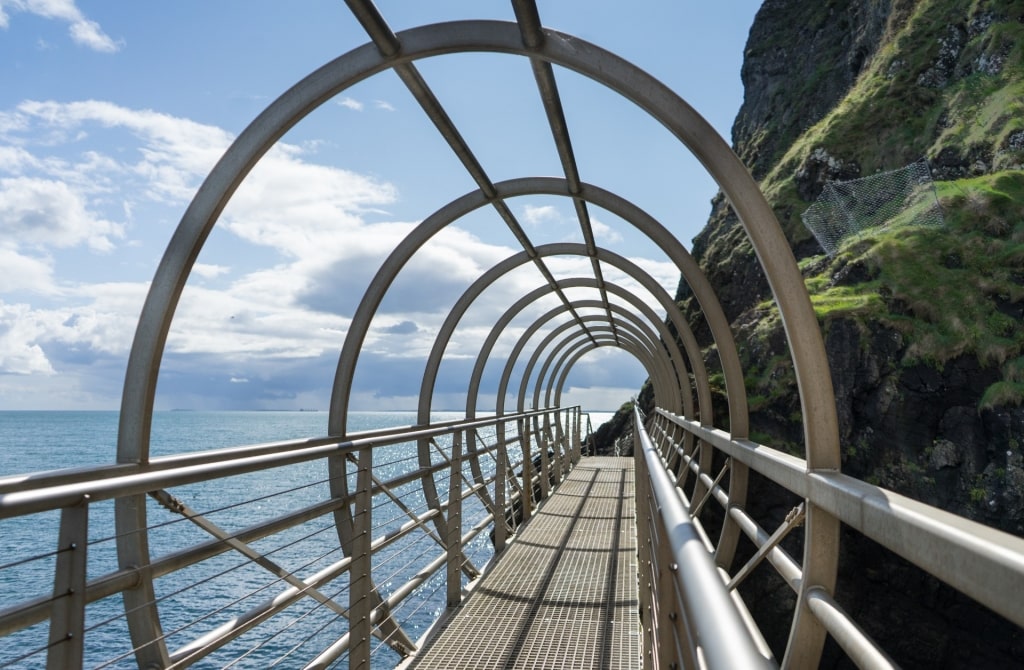
Gobbins Coastal Path, Northern Ireland
Nearer to Belfast, the Gobbins Coastal Path allows you to walk through caves and along cliffs, sometimes traversing spindly bridges. This European hike is an exciting adventure that brings you close to nature, birds, and the pounding waves of this striking piece of Irish coastline.
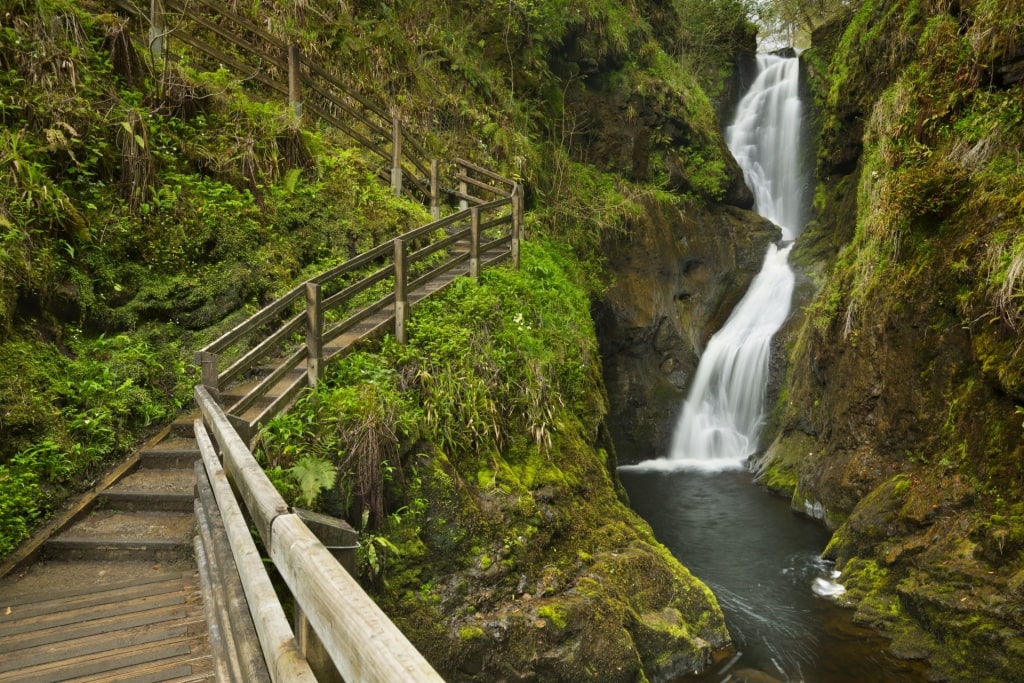
Glenariff Forest Park, Northern Ireland
Northern Ireland also has treasures such as Glenariff Forest Park, with a dramatic waterfall, and Strangford Lough. Strangford, the largest sea inlet in the British Isles, is as famous for its birdlife as it is for its food scene.
Read: Best Hikes in the UK
Gardens
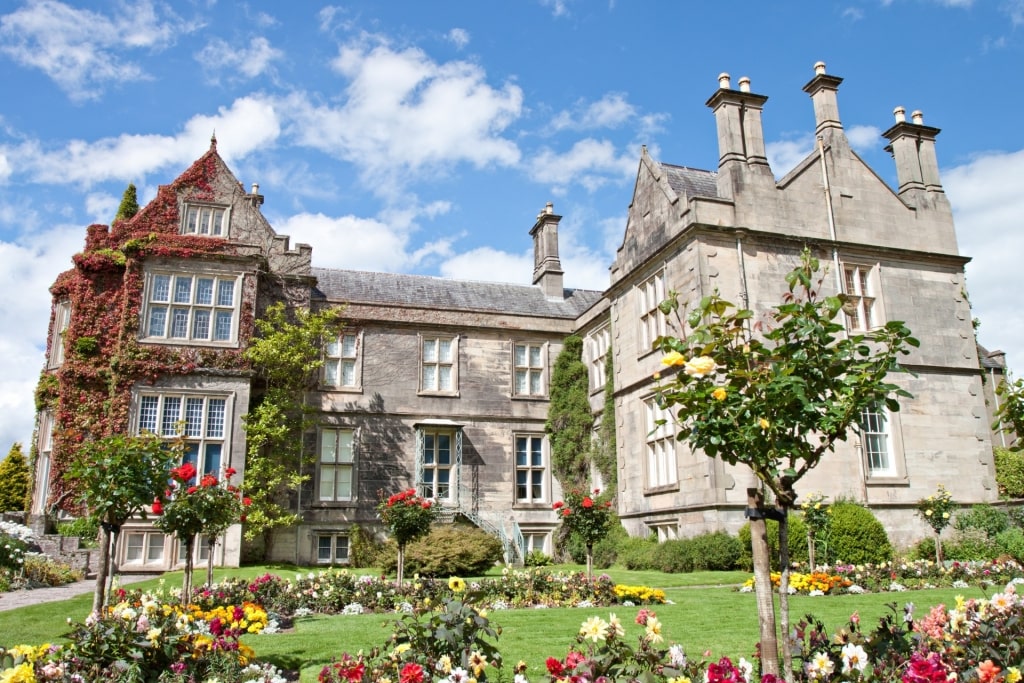
Muckross House & Gardens, near Cork
You might think that, with all its scenic splendors, Ireland has no need for gardens. Think again, for every drive through the country and its flower-filled “Tidy Town” villages will show you how important gardens are here.
On a grander scale, several larger historic houses are known for their parklands and formal gardens. Muckross House & Gardens stands out for its grounds, even in the setting of Killarney National Park.
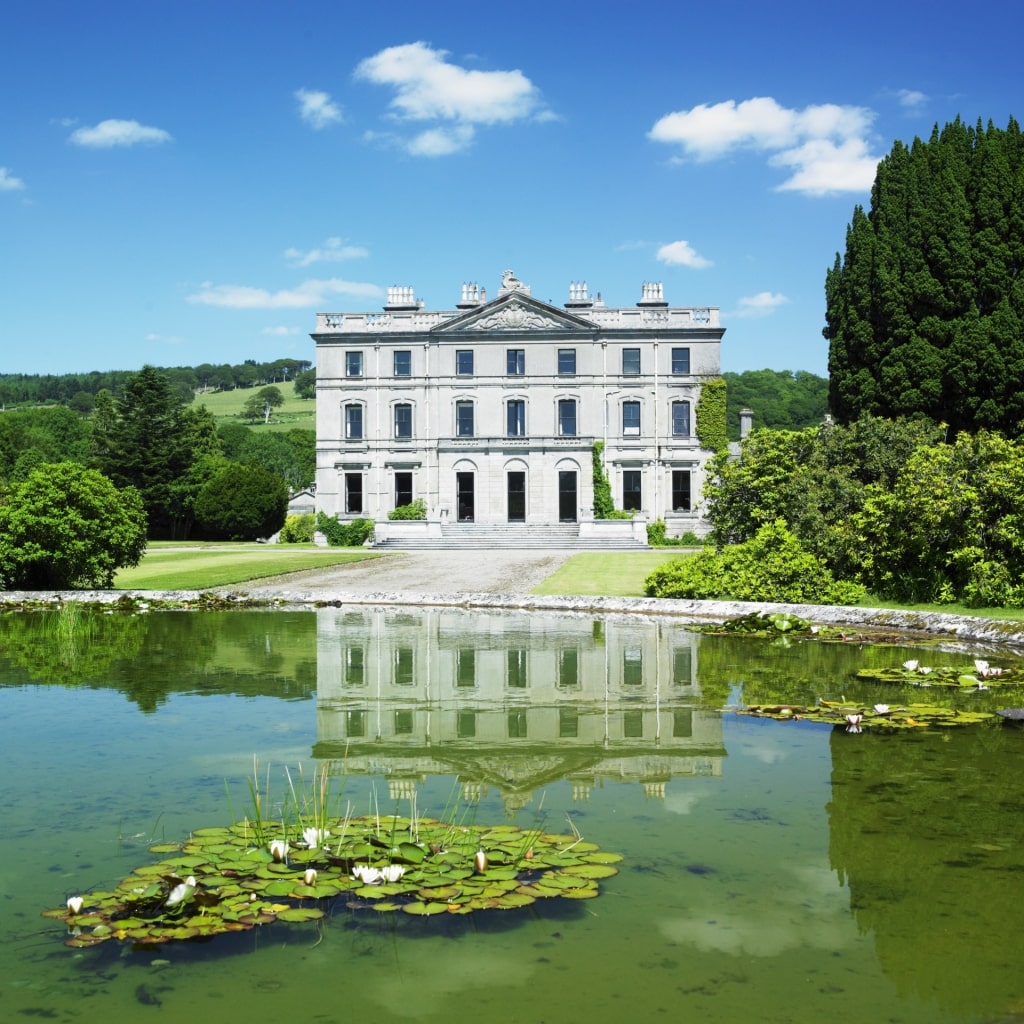
Curraghmore House, Waterford
One of the best things to do in Waterford is to tour the grounds of Curraghmore House, which covers 2,500 acres—the largest of such gardens in Ireland. Formal gardens, ancient woodlands, and grazing lands attract many different species of birds, and other wildlife.
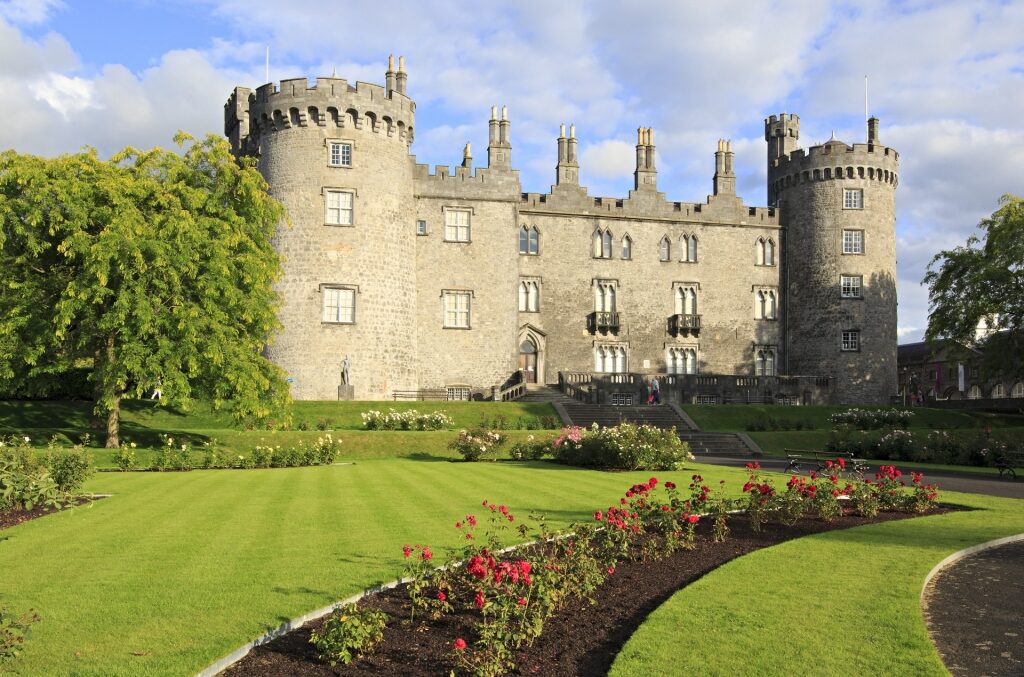
Kilkenny Castle, near Waterford
Kilkenny Castle was built by the Normans in 1195, although its present appearance owes much to Victorian remodeling. Its parklands, gardens, and lake are spread over 50 acres, with the formal rose garden being just one highlight.
Bangor Castle, just outside Belfast, is a grand country house (now the offices of the county council) notable for its walled gardens. The 1.5-acre grounds, which include kitchen, herb, flower, and swamp gardens, were first laid out in the 1840s.
Castles
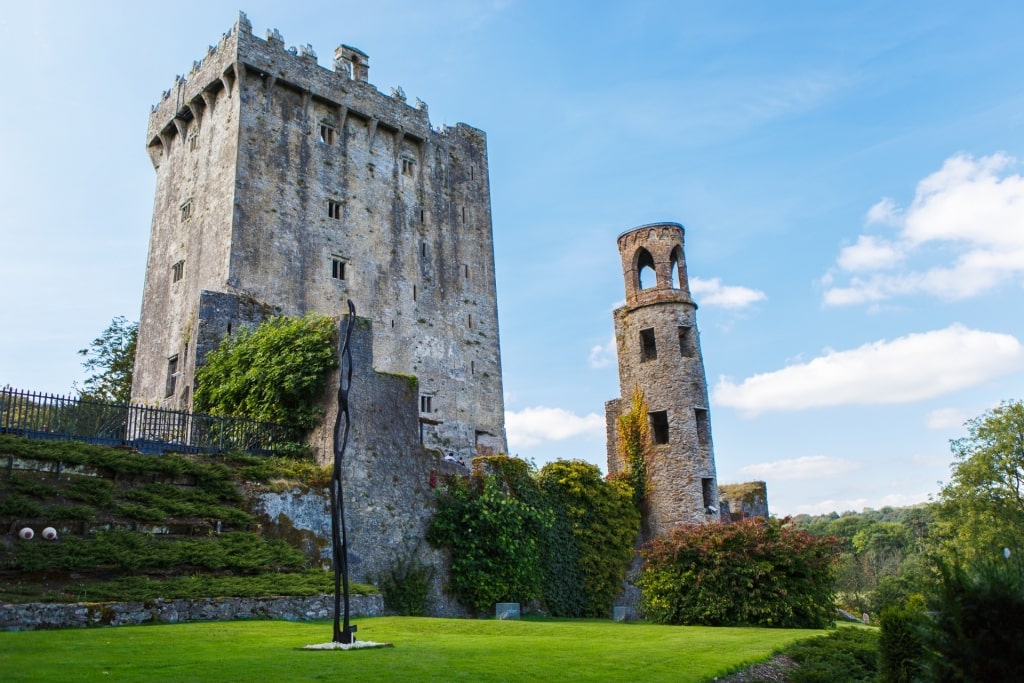
Blarney Castle, County Cork
Like much of Europe, Ireland has a long history of war and conflict, with invaders that include the Vikings, who founded Dublin. The Normans, the Scots, the Spanish, the English, the Dutch, and the French are among other visitors over the centuries who liked Ireland so much they decided they would fight for it.
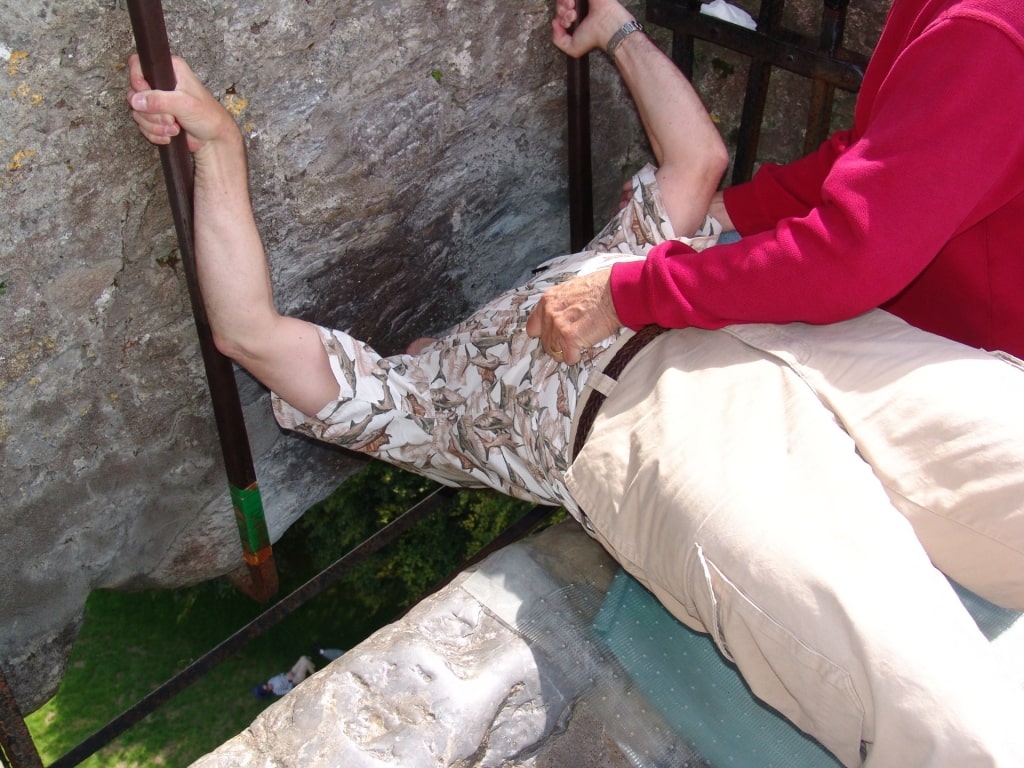
Blarney Stone, County Cork
One result is the abundance of castles that dominate towns and hills around Ireland. Perhaps the most famous castle in Ireland is Blarney Castle, County Cork, best known for its ritual of “kissing the Blarney Stone” – said to be the secret of Irish eloquence.
Cahir Castle, a medieval European castle, was thought to be impregnable until attacked with artillery in 1599. Standing on a rocky island on the River Suir, County Tipperary, it is among the country’s biggest—and best preserved—castles.
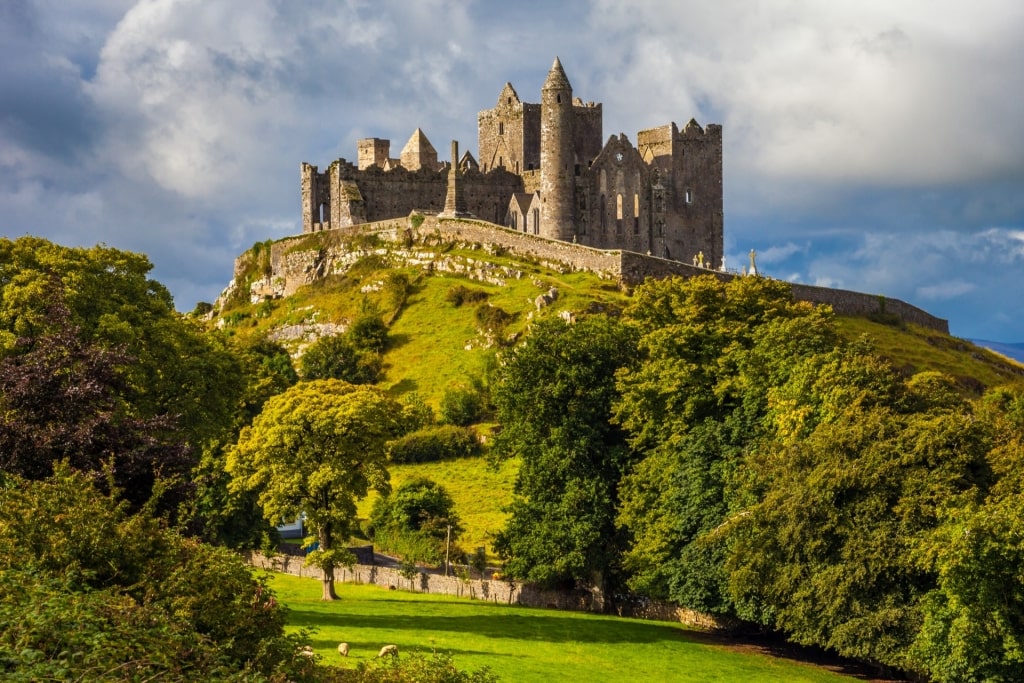
Rock of Cashel, near Waterford
The Rock of Cashel, also in Tipperary, is a picturesque sight, with great views for those who climb to its battlements. More than a castle, it holds several remarkable medieval buildings, with unique Romanesque frescoes.
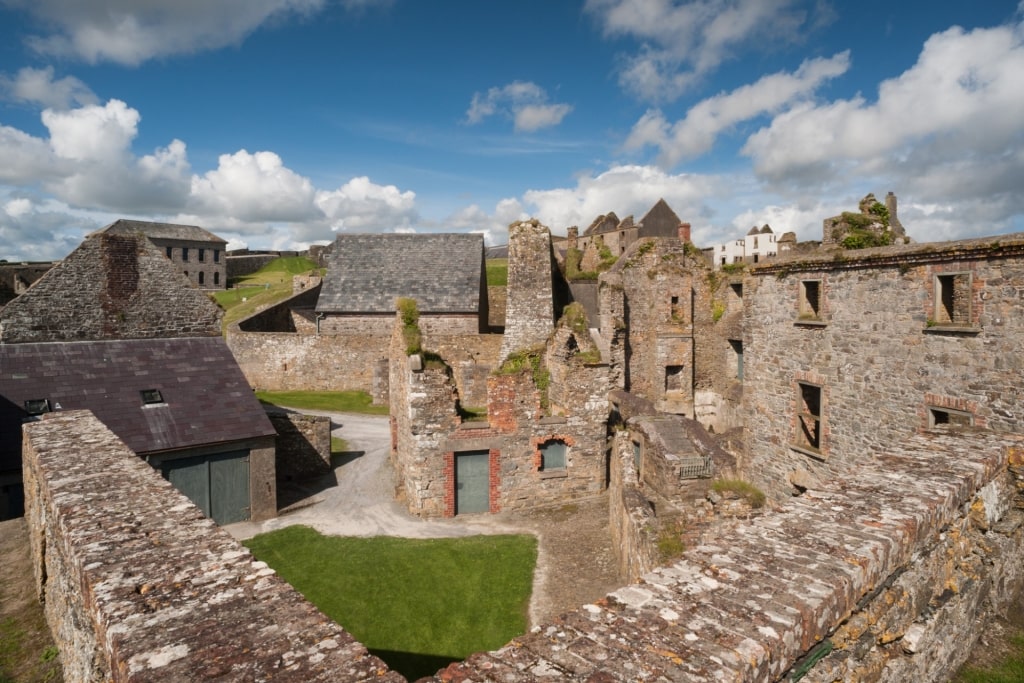
Charles Fort, County Cork
Charles Fort, built to protect the harbor of Kinsale in County Cork, is a star-shaped fortification from the 17th century. Its dramatically low-slung design is a marked contrast to more conventional castles, being a response to the age of cannon.
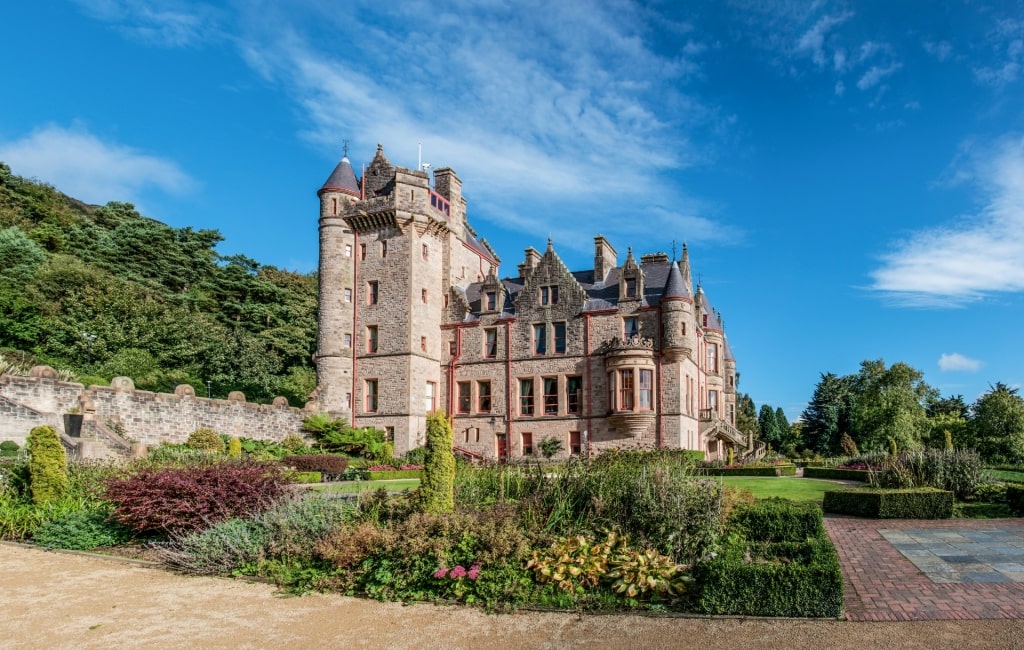
Belfast Castle
Belfast Castle stands on the slopes of Cave Hill (well worth exploring itself on walking trails), with scenic views over the city and lough below. It is an imposing Victorian structure, finished around 1870, with an interesting visitor center, antique shop, and a popular restaurant.
Audley’s Castle is on the shores of Stanford Lough, a combination of subject and setting that makes for a photographer’s delight. It’s a simple but interesting structure, dating to the 15th century, now best known for its regular appearances on screen.
Prisons
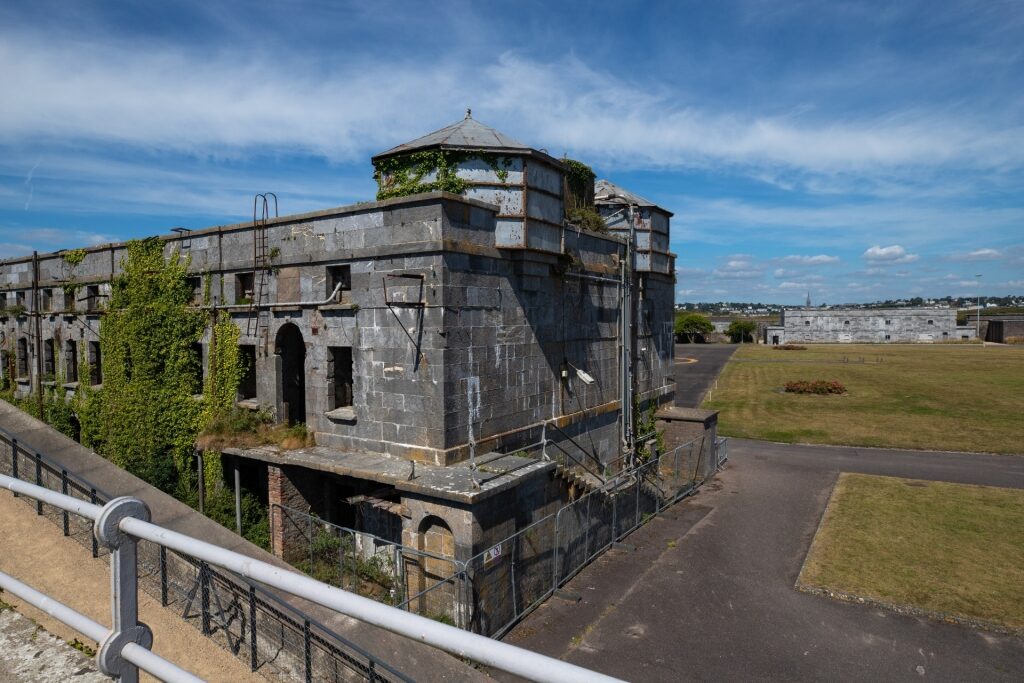
Spike Island
With its history of invaders, it’s no coincidence that Ireland also has a long history of civil unrest. That history is brought to life vividly in several prisons now open to the public as historic sites.
Spike Island was a prison for more than 400 years, and the world’s largest during the 1840s. Sitting on an island in Cork harbor, it only closed in 2004.
First opened in the 1640s, during Cromwell’s conquest of Ireland, it held thousands of prisoners, many of whom were sent to North America or the Caribbean as indentured servants. In the 1840s, during the Irish Famine, its prisoners—many of them children—endured awful conditions, with hundreds dying.
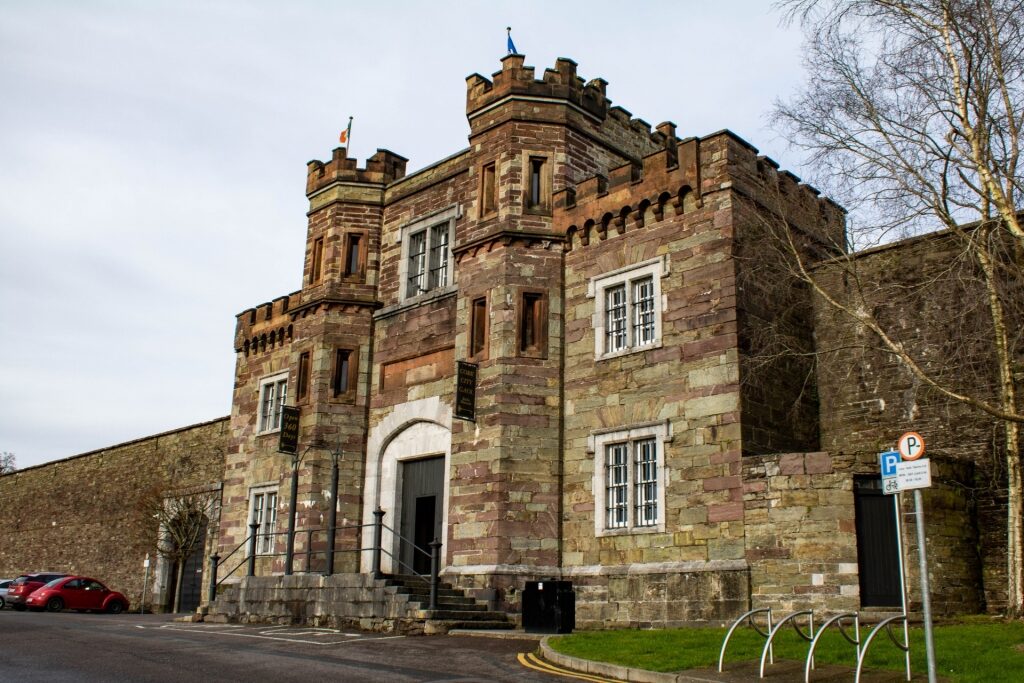
Cork City Gaol
Cork City Gaol is now a museum with a fascinating self-guided audio tour. This striking Victorian building was a women’s prison for much of its life, but writer Frank O’Connor, author of the short story Guests of the Nation, was imprisoned here during the Irish Civil War.
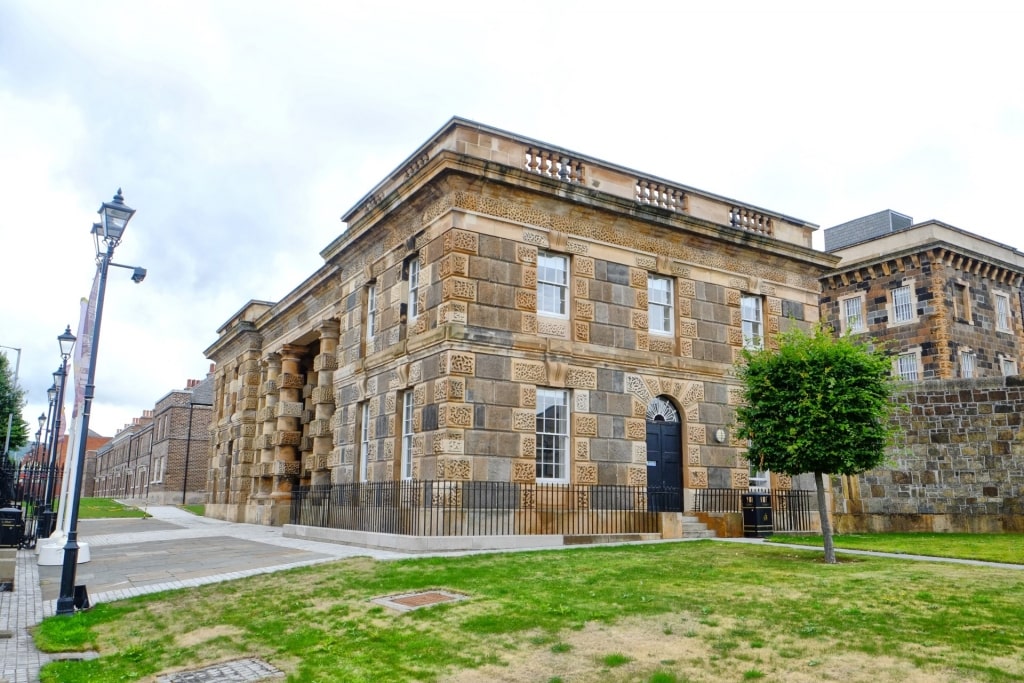
Crumlin Road Gaol, Belfast
Meanwhile, one of the best things to do in Belfast is to explore the Crumlin Road Gaol, which opened in 1854 and gives another vivid picture of a Victorian prison. It was a high-security prison during Northern Ireland’s “Troubles” from the late 1960s to 1998, and a dedicated tour will tell you more about that terrible time.
Churches
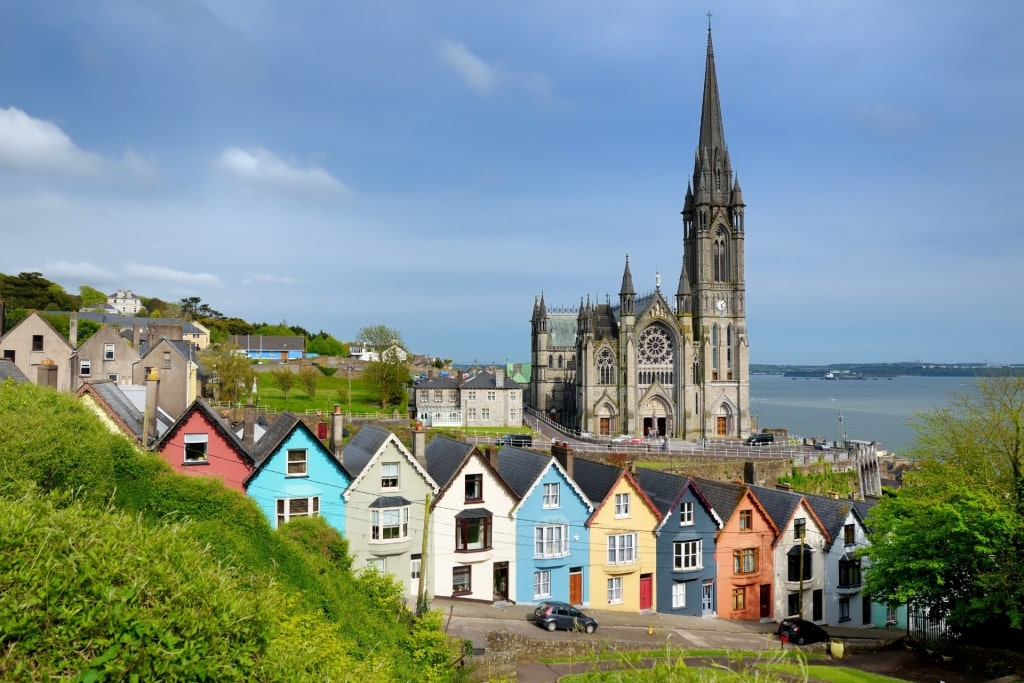
St. Colman’s Cathedral, Cobh
The church, and the Catholic Church in particular, has long been a major presence in the life of Ireland. It’s a history marked by a legacy of grand churches and imposing cathedrals.
St. Colman’s Cathedral has dominated the Cobh skyline since the early 1900s with its 300-ft-high spire, making it the tallest church in Ireland. Cobh is a colorful resort town on Cork Harbor, one of the world’s largest natural moorings.
Besides its spire, St. Colman’s is notable for its carillon of 49 bells, the largest in the British Isles. You can hear it being played every Sunday afternoon and on special occasions.
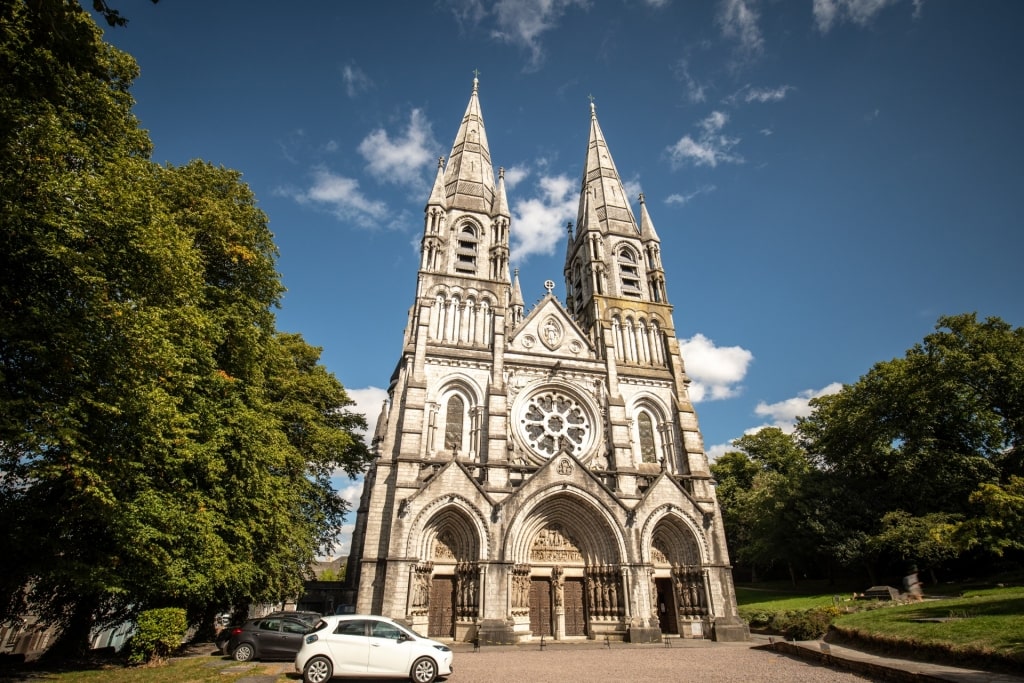
Saint Fin Barre’s Cathedral, Cork
Saint Fin Barre’s Cathedral in Cork itself has three spires but a similar gothic revival style. Finished in 1879, it contains more than 1,200 sculptures, including many interesting gargoyles, and a historic 4,500-pipe organ.
St. Anne’s Cathedral in Belfast took more than 100 years to finish, from the foundation stone in 1899 to the Spire of Hope added in 2007. Highlights include its mosaics, stained glass and memorial to those lost in the sinking of the Titanic.
Whiskey
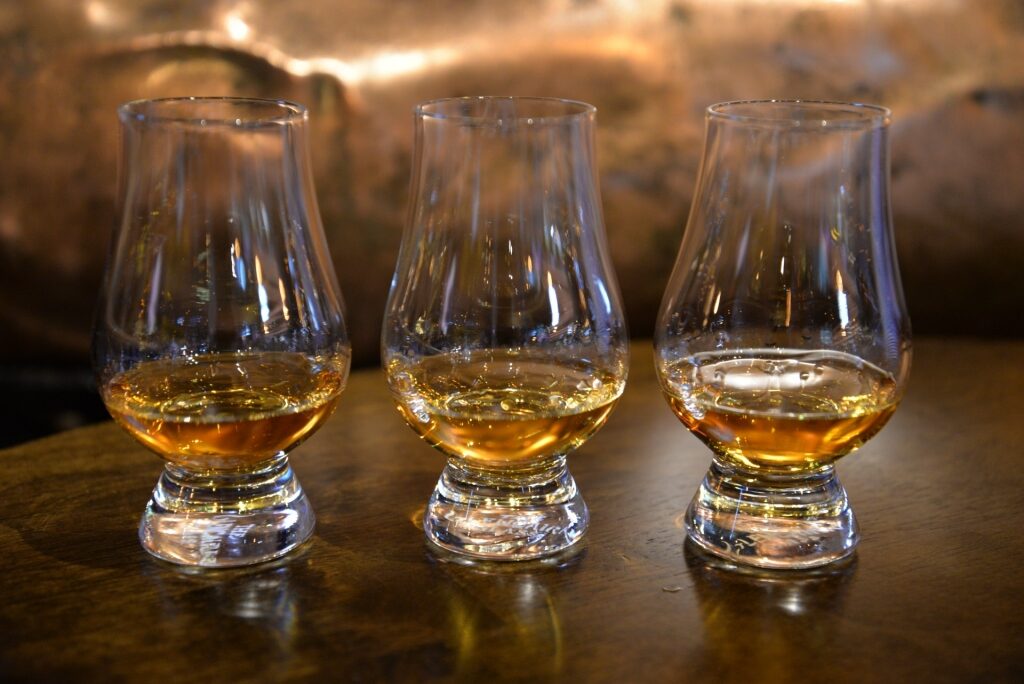
Whiskey
What is Ireland known for? Whiskey is one of the most obvious delights that springs to mind.
Whiskey, interestingly, is only one of the many words from the Irish language you may not realize you know, coming from “uisce beatha” meaning “water of life”.
Spend a cold, wet winter day in Ireland, and you may understand why whiskey got its name. You can find out more, and sample a drop or three, at two famous distilleries.
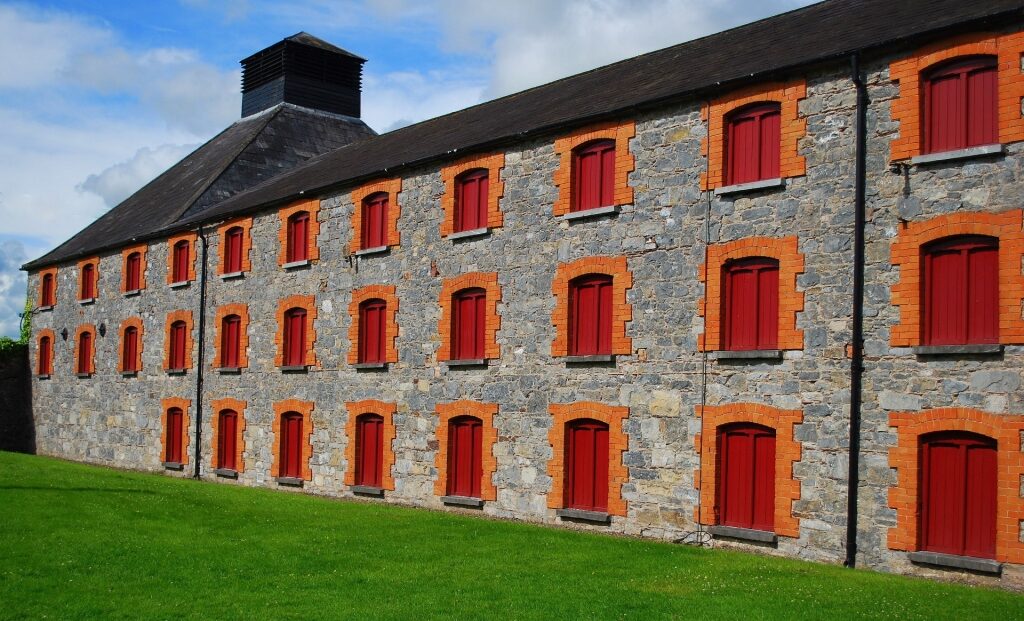
Jameson Distillery, County Cork
In Midleton, County Cork, the Jameson Distillery produces every drop of its famed whiskey, whose roots go back to 1780. On a tour, you can learn all about the process, and visit the Irish Whiskey Academy.
Near Northern Ireland’s Giant’s Causeway is the village of Bushmills, home to the historic Bushmills Distillery. “The oldest licensed whiskey distillery in the world” has been making its malt whiskey here since 1608.
Crafts
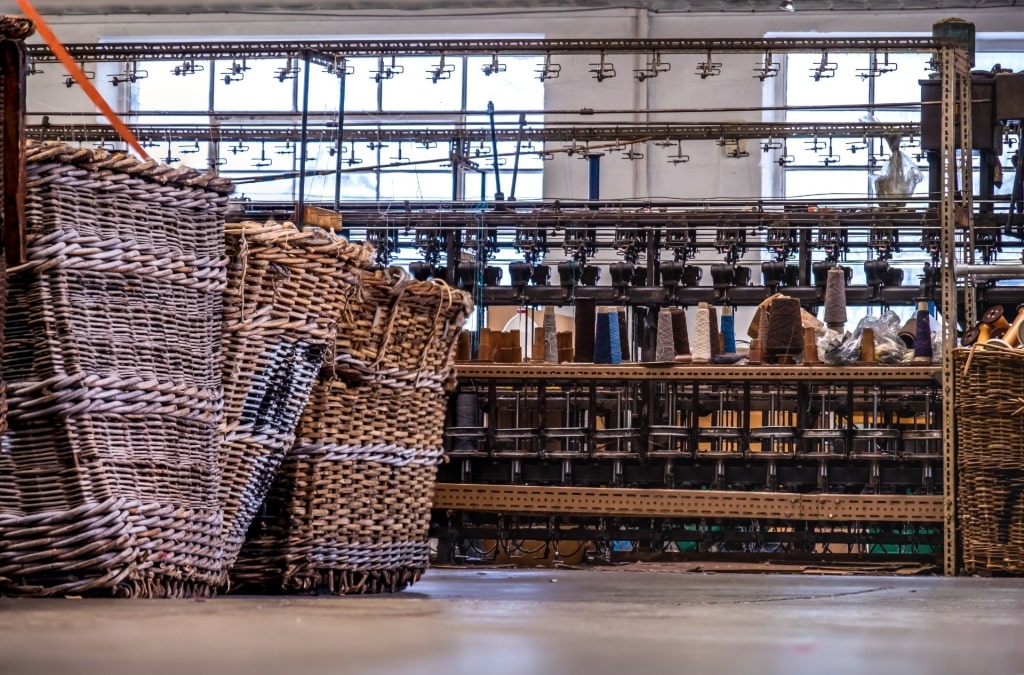
Crafts factory in Ireland
From Irish tweed and ceramics to jewelry and linen, you are never far from a lovely piece of craftwork in Ireland. Whether in Belfast, Cork, or anywhere in between, you’ll find a shop with something original to take home with you.
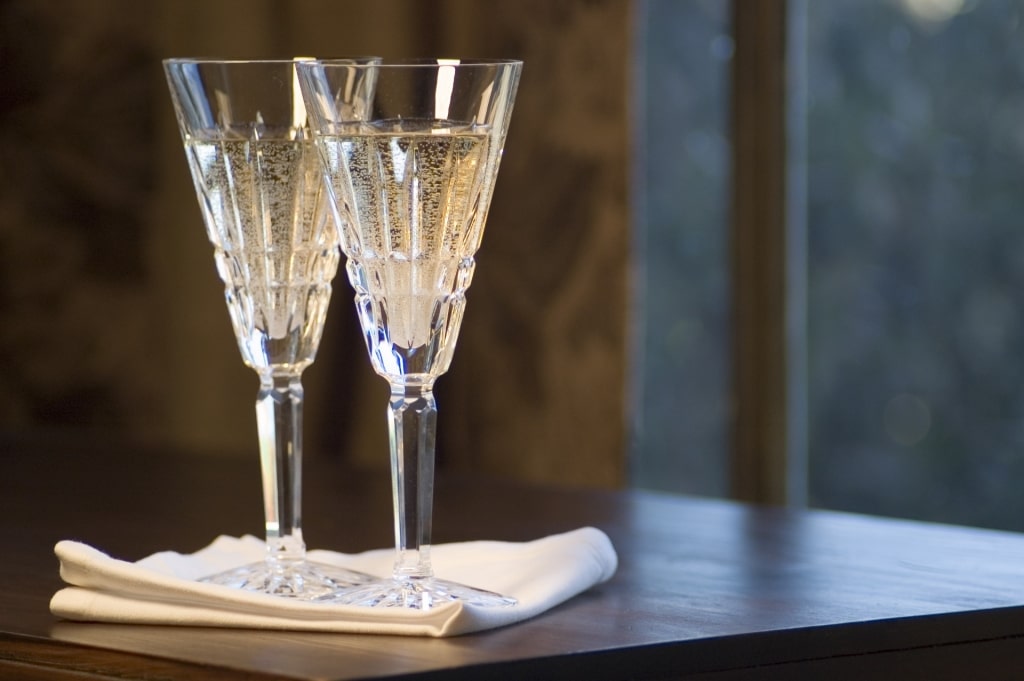
Waterford Crystal
In many of them you will find Waterford Crystal, but the original factory is in Waterford. After a tour to see the craftspeople at work, you can admire an exhibition of some of their finest pieces, and, of course, buy some yourself.
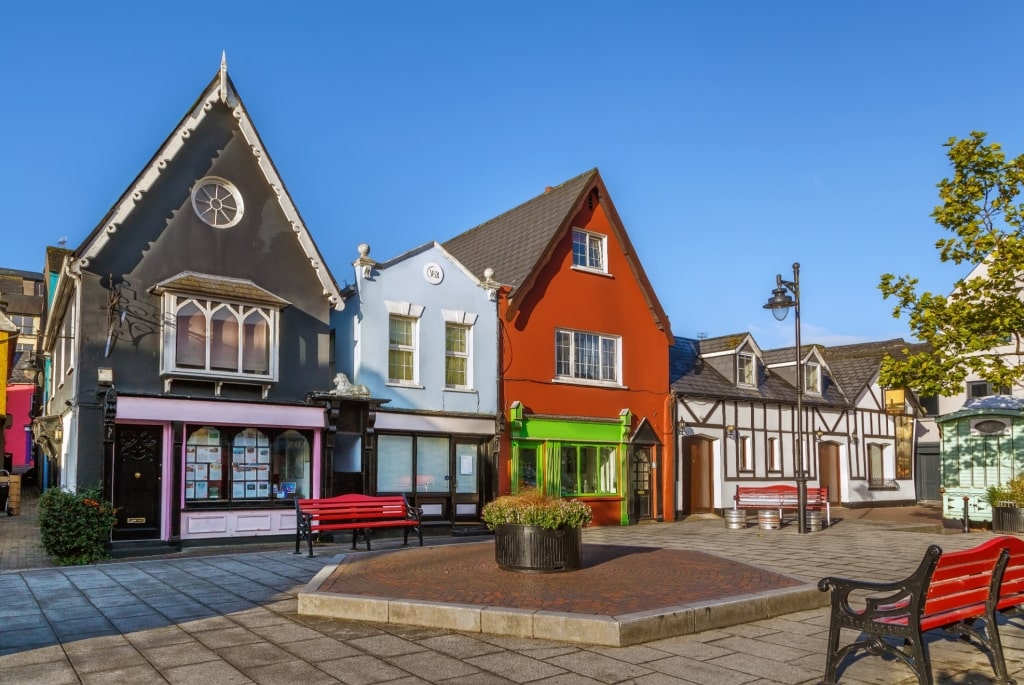
Kinsale, near Cork
Near Cork, the small town of Kinsale has become a center for artists of every kind. Whether it’s a painting, a pot, leatherwork, a bronze, or something even more unusual, this is the place to find it.
Just outside Belfast, you’ll find the Irish Linen Centre and Lisburn Museum. As well as learning about the history of linen, you can buy some exclusive pieces, from napkins to tablecloths.
Read: Best Places to Visit in Ireland
Immigration
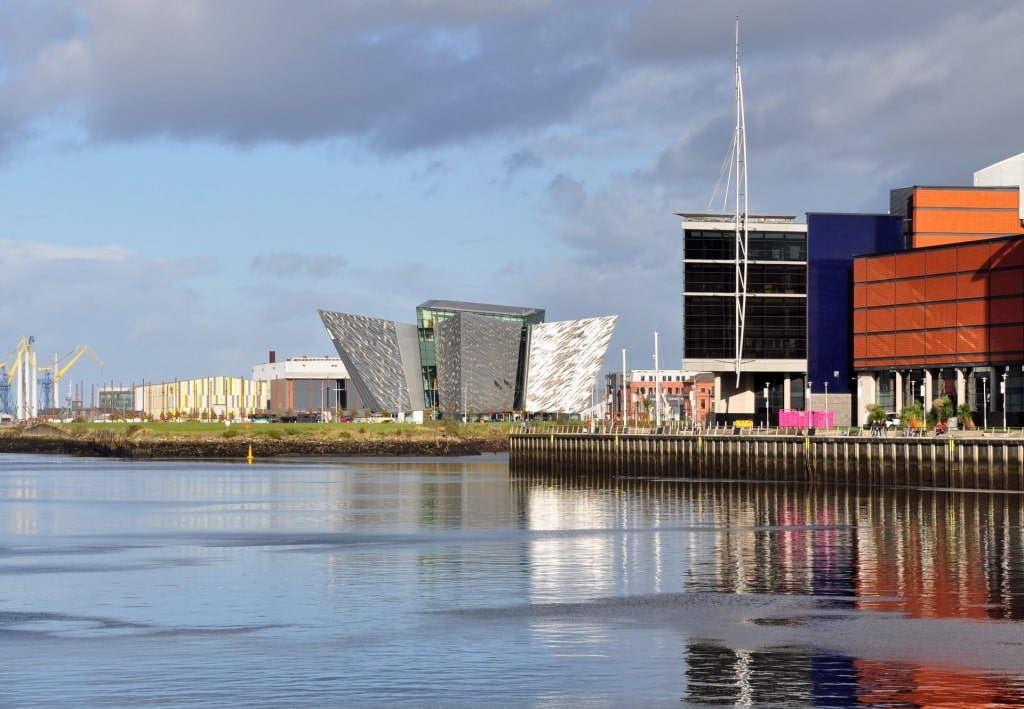
Titanic Belfast
Ireland lost half of its population in the 19th century, many to famine, and the rest to immigration. Irish immigrants fought in large numbers in the American Civil War. They helped build New York, Boston, Chicago, and Toronto, and dominated the early days of boxing and baseball.
One of the best museums in Europe, Titanic Belfast tells the story of the famous White Star liner from construction in Belfast to its tragic loss in 1912. Many of its passengers were immigrants, and you can check their names at the end of this multimillion-dollar, multi-sensory experience.
In Cobh, the Titanic Experience is set in the original White Star Line’s office building. It tells the story of the 123 passengers who boarded the ship here before its maiden, and final, voyage across the North Atlantic.
Millions of immigrants passed through the port of Cobh, and the Heritage Centre mines that rich seam of history with a self-guided tour. Outside stands a statue of Annie Moore, the first emigrant ever to be processed at New York’s Ellis Island.
Belfast
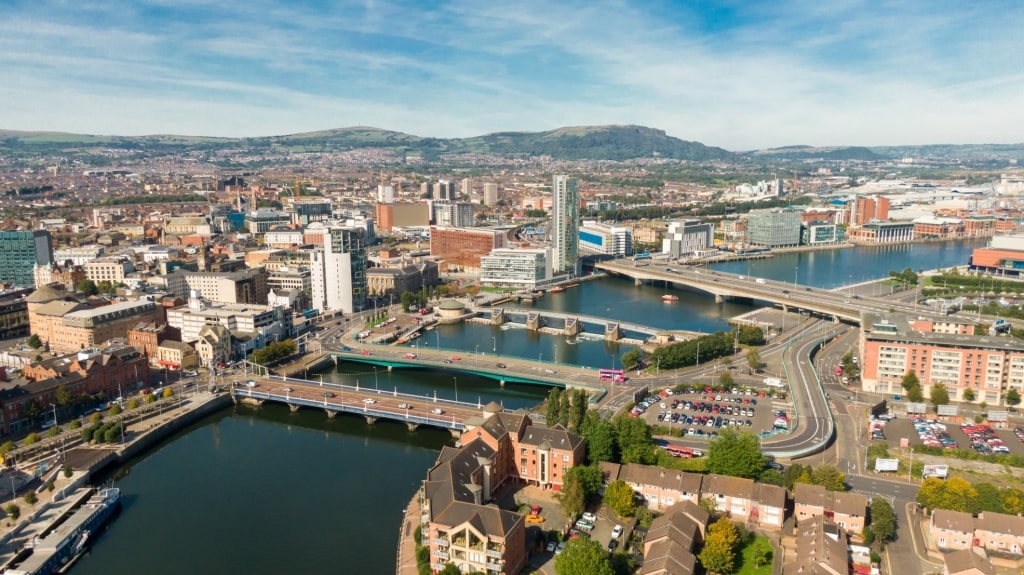
Belfast
The capital of Northern Ireland was built on the wealth of shipbuilding, linen, and other industries. Its heart was torn out during “The Troubles” but it has reinvented itself with first-class restaurants, art galleries, museums, and a wide range of shopping.
The Cathedral Quarter around St. Anne’s is famed for its pubs, restaurants, and a lively music and arts scene. Its historic buildings, interesting alleyways, and narrow streets make for a great backdrop to the action.
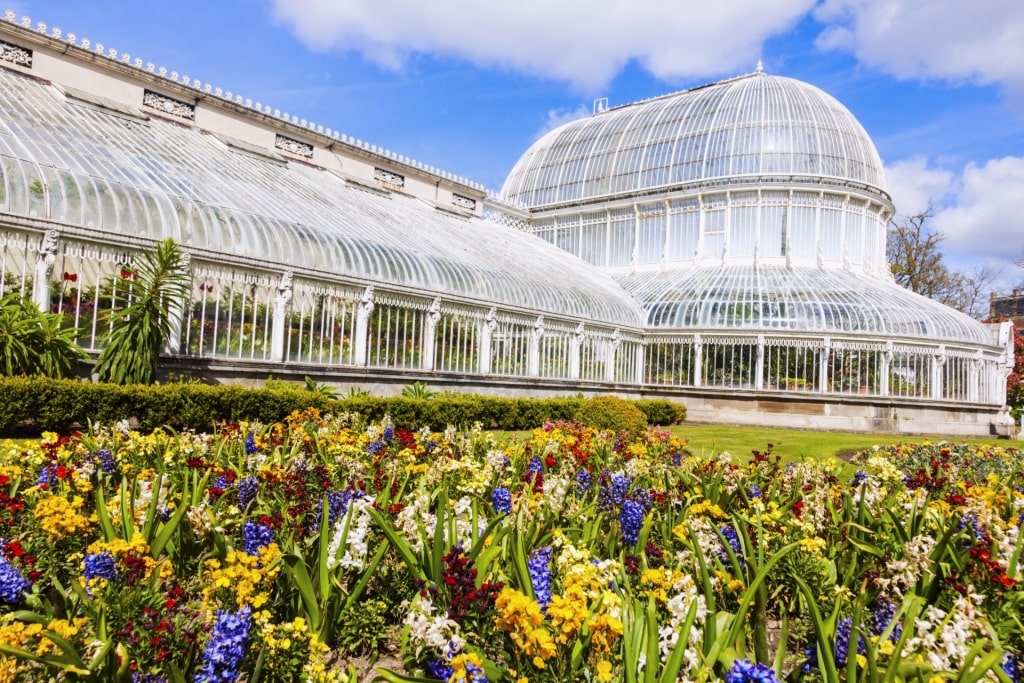
Botanic Gardens, Belfast
If you can tear yourself away from the nearby Botanic Gardens, the Ulster Museum is a must-see if you have any interest in Irish history. It’s worth a visit just for the treasures of the Girona, sunk near the Giant’s Causeway in 1588 as part of the Spanish Armada.
The so-called “Peace Walls” along the Falls Road and Shankill Road are a showcase of the muralist’s art. Dealing with themes ranging from fallen comrades to current affairs, they are best seen as part of a guided tour.
Cork
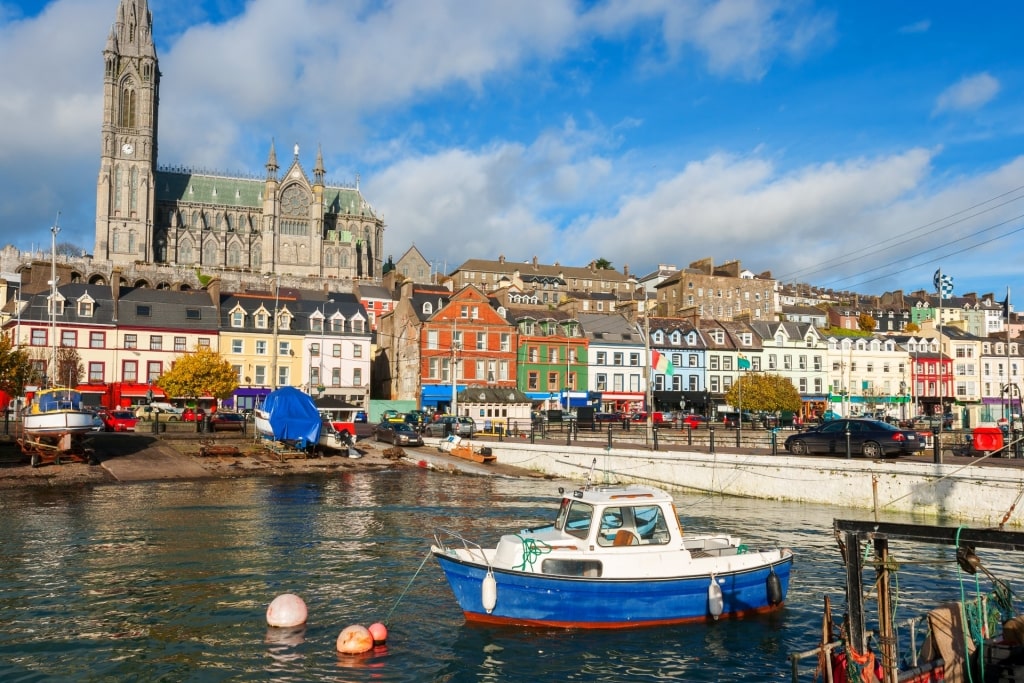
Cork
Don’t let locals hear you call Cork “Ireland’s second city”—their pride in their city is manifest. With a youthful population, it is buzzing with coffee shops, an art scene, and arguably Ireland’s best restaurants. Not to mention, it also sees one of the best sunsets in the world.
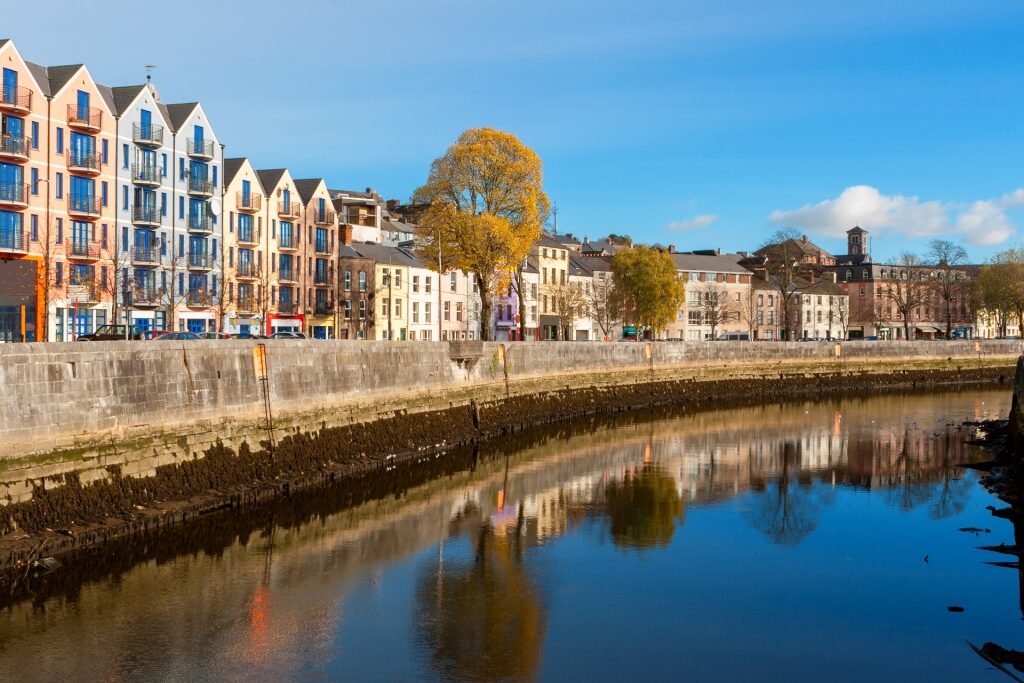
St. Patrick’s Street, Cork
To back up that pride, St. Patrick’s Street has been voted Ireland’s best shopping street. This curved, pedestrian-friendly street holds several department stores, many independent shops, and plenty of pubs and restaurants.
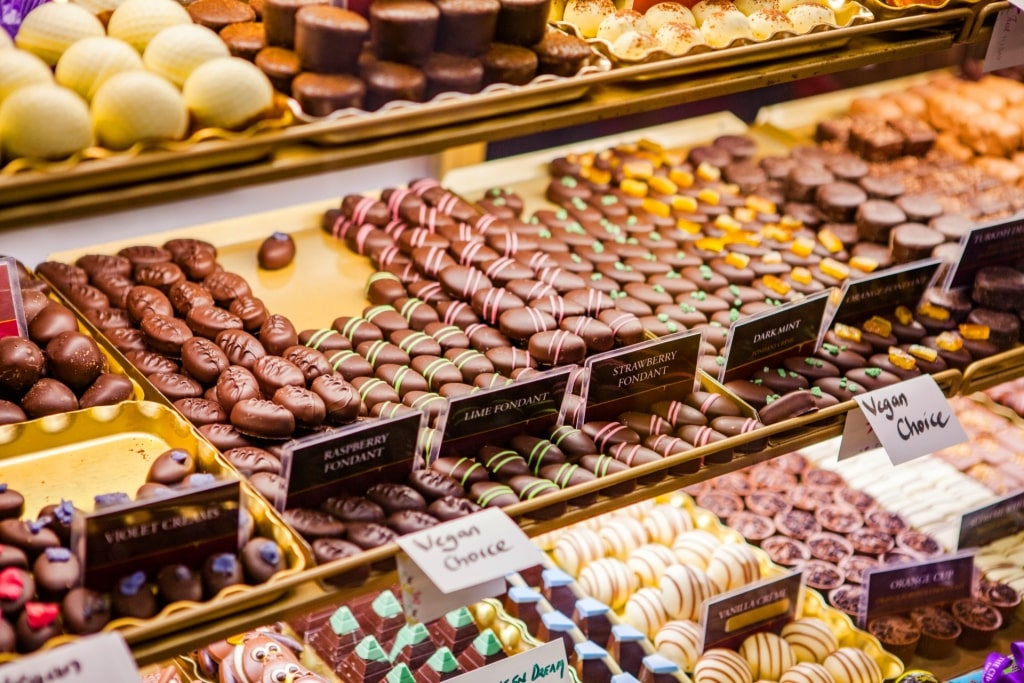
English Market, Cork
One of the best things to do in Cork is to visit the English Market, which was established in 1788 and remains Cork’s most interesting food market. Stalls sell local produce such as bread, cheese, fish, and hams, and you’ll also find a number of cafés and restaurants.
Talking about food essentials, the Cork Butter Museum may help explain the enduring appeal of Irish butter. Lush grass, mild climate, salt taxes, and geology all played their part in making Irish butter famous worldwide.
Read: Ireland Travel Tips
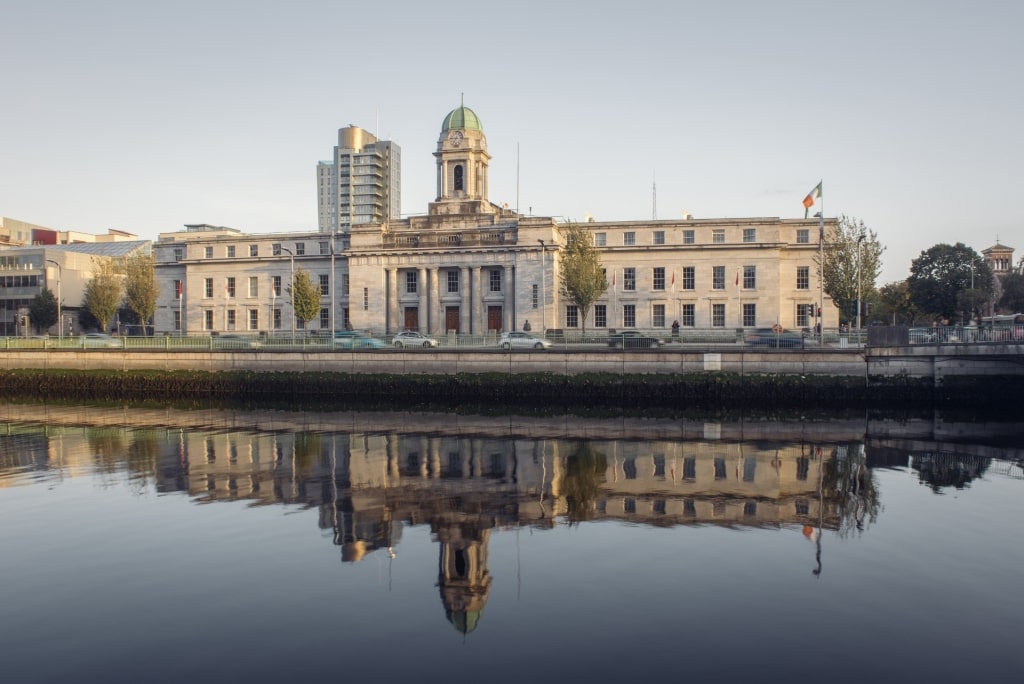
Cork City Hall
Still the headquarters of the city council, Cork City Hall is a handsome, photogenic building sitting on the River Lee. Burnt down during the Irish War of Independence, it was rebuilt in 1934.
Has this list of what Ireland is known for inspired you to visit the Emerald Isle? Browse Celebrity’s Ireland cruises to find the perfect vacation for you and your loved ones.
